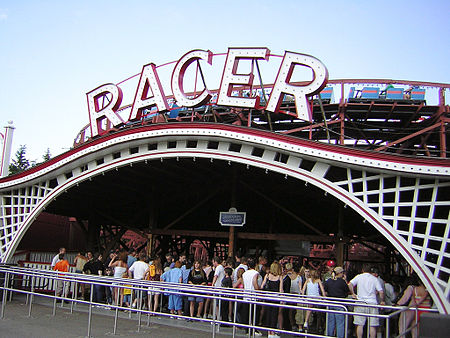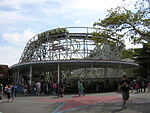Racer (Kennywood)
KennywoodOperating roller coastersPittsburgh History & Landmarks Foundation Historic LandmarksRacing roller coastersRoller coasters in Pennsylvania ... and 3 more
Roller coasters introduced in 1927Roller coasters manufactured by Charlie MachWooden roller coasters

The Racer is a wooden racing roller coaster located at Kennywood amusement park near Pittsburgh in West Mifflin, Pennsylvania. Built by Charlie Mach and designed by the legendary John A. Miller, the Racer opened to the public in 1927 and is one of the oldest operating roller coasters in the world. It features a Möbius loop layout, in which both of its trains travel along one continuous track. Each train returns to the opposite side of the station from which it began.
Excerpt from the Wikipedia article Racer (Kennywood) (License: CC BY-SA 3.0, Authors, Images).Racer (Kennywood)
Kennywood Boulevard,
Geographical coordinates (GPS) Address Website Nearby Places Show on map
Geographical coordinates (GPS)
| Latitude | Longitude |
|---|---|
| N 40.386944444444 ° | E -79.861944444444 ° |
Address
Kennywood Park
Kennywood Boulevard 4800
15122
Pennsylvania, United States
Open on Google Maps










